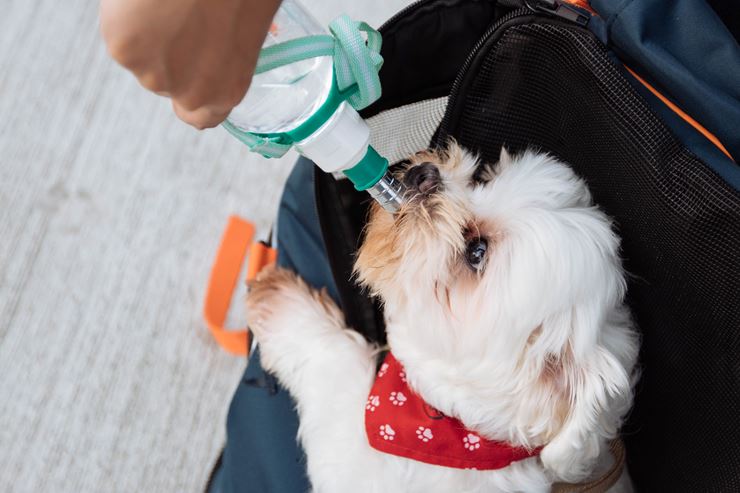
Healthy Water, Healthy Dogs
You want your dog to have the best of the best, from food to toys to a nice comfy bed. But when it comes to keeping your furry friend hydrated, you likely don't worry too much about what kind of water you give them.
However, even if you mean well, the water you offer your pet could cause health issues like vomiting, reproductive failure, and poisoning. Therefore, you must ensure the safety and health of the water before offering it to your furry pal.
The Dangers of Tap Water
While some tap water may be safe for your pet, it's incredibly challenging to make sure that it is. Throughout history, people have found a number of harmful contaminants in tap water, including lead, chlorine, and even parasites. These incidences of contamination still occur quite often, even today. Even if your city deems your water safe, it may still contain certain levels of metals or other dangerous elements that can affect your dog.
E. Coli
There are numerous strands of E. coli that find their way into food and water. While most of them don't cause harm, a few can infect dogs and result in serious health issues. For instance, the bacteria can cause a disease called colibacillosis, which affects the lower intestinal tract and results in vomiting and dehydration.
Chlorine
If chlorine levels are within regulatory guidelines, then the amount in tap water should be safe for dogs to ingest. However, if the amount is above the limit or the byproducts of chlorine aren't filtered out, they could potentially harm your dog.
Lead
This metal is common in tap water. However, when levels rise, they can have some seriously damaging effects on both your health and your pet's health. High levels can result in poisoning, impaired cognitive function and reproductive failure, and even death.
These are only a few of the many contaminants that may be lurking in your tap water. And, as previously mentioned, even if the Environmental Protection Agency deems your water safe, it may not be. Different treatment methods generate various qualities of clean water output, and some treatments aren't suitable or strong enough to remove these harmful contaminants.
The Problem With Bottled Water
So if tap water isn't safe, bottled water must be, right? Well, not so fast. The water that comes in plastic bottles or even gallon jugs isn't consistently the same. Some come from a spring and boost mineral content, while others come from the same water treatment plants as your tap water. One study even found 38 chemicals in 10 different bottled water brands. Of course, these can have the same effects as tap water on your dog.
And just like tap water, even if the label boasts that it is certified clean or pure, it may still contain certain levels of contaminants. These can affect your dog even under the legal limit, especially if they are smaller, older, or already have health problems.
So if all this water is dangerous, what kind of water is safe for your dog?
Possible Solutions
Luckily, there are solutions to contaminated water — so don't lose hope just yet!
One of the simplest ways to provide healthy and clean water for your dog is to change their water regularly and keep the bowl washed and clean. This prevents bacteria from growing and gets rid of dirt, hair, or other debris that may have fallen into it. Additionally, you may consider purchasing a steel, glass, or ceramic water bowl to prevent toxins from leaching out of plastic bowls into the water.
But the best way to protect your beloved friend is to purchase and consistently use a water filter. Running tap water through a simple carbon filter removes a wide variety of potentially harmful contaminants like chlorine, lead, mercury, asbestos, and other substances.
However, according to the Environmental Working Group, the most effective filters are reverse osmosis filters. These filter out things that carbon filters can't, like arsenic, hexavalent chromium, and nitrates, all of which can be dangerous to your dog.
These filters and other types of equipment can be costly, but they're a worthwhile investment if you value your dog's health and happiness.
Bio:
Emily is a freelance wildlife conservation and pet blogger. To check out more of her work, see her blog, Conservation Folks, or follow her Twitter account @emilysfolk.










